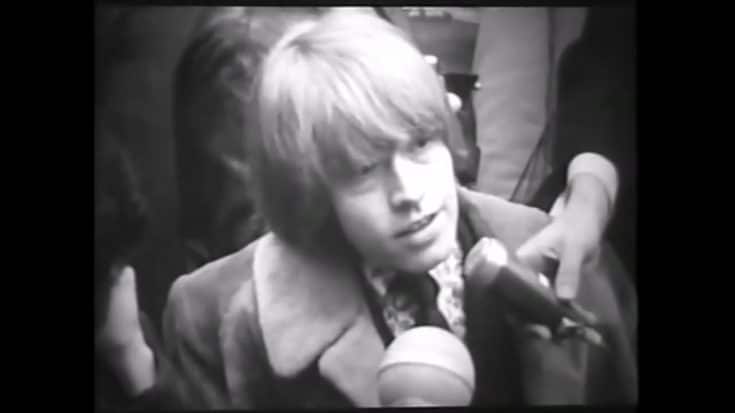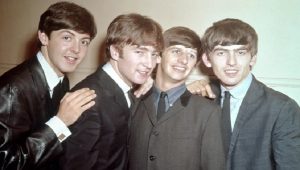The Classic Rock Mysteries Still Unsolved Today

via Famulus / Youtube
For more than half a century, rock and roll has exerted a profound cultural influence. Over this long history, a great deal of famous people have used music’s ability to change people into grandiose characters, making it harder to distinguish between fact and fiction. Rock artists frequently give off the impression of being superhuman, therefore it’s not surprising that their lives are entwined with bizarre riddles.
Certain of these secrets feed myths, such as the enduring notion that Elvis Presley orchestrated his own demise and is still living undercover. Still, there are several unsolved riddles around rocks that have persisted for years, if not decades. If these mysteries were connected to common people, they might not be as well-known. However, they acquire a legendary quality when you consider the glamour and grandeur of the rock and roll image.
Rock stars are people who live lives that defy expectations, doing things that are out of the ordinary for regular people and doing them with style and grace. This propensity for the remarkable supports the idea that the mysteries surrounding them entail situations that are outside the realm of common understanding, which makes them all the more fascinating.
While these conundrums may remain unsolvable, their allure persists. Presented here are the most significant unsolved mysteries in classic rock, perpetually fascinating and shrouded in intrigue.
The mysterious disappearance of Richey Edwards
The Manic Street Preachers, who combined elements of punk, classic rock, and alternative music to create a powerful guitar-driven sound, were on the verge of success in 1995. Fans were drawn to the troubled and charismatic rhythm guitarist and poet Richey Edwards, whose politically charged lyrics frequently evoked comparisons to The Clash.
Edwards battled substance misuse, mental health concerns, and self-harm, even going so far as to carve “4 REAL” into his arm during a live interview. These struggles gave his intensely angry and passionate lyrics more emotional depth, which resonated well with listeners.
But suddenly, the guitarist vanished. He departed his hotel on February 1, 1995, with the intention of going on a promotional tour with his bandmates. He drove to his house in Wales and disappeared. His automobile was discovered near a bridge infamous for suicides, and considering Edwards’s precarious mental condition, fears heightened.
His body was never found, despite toll records showing he crossed the bridge early in the morning. A subject that had always fascinated the singer, fans conjectured that Edwards might have faked his own death by drawing comparisons to his uncle’s enigmatic ten-year disappearance during Edwards’s childhood. Although the details are still unclear, Edwards was formally pronounced deceased in 2008.
https://twitter.com/RogerSargo/status/1406582437338099715
The twisted death of Johnny Thunders
Forming as a proto-punk group in 1971, The New York Dolls were a band ahead of their time and went on to become one of the most important bands of the 1970s even though they didn’t have much success at first. The band broke up in 1976 due to internal conflicts, drug misuse, and dwindling popularity. The members then went their own ways to pursue solo careers.
Once a symbol of punk chic, guitarist Johnny Thunders had a turbulent career. He struggled with heroin addiction and spiraled down the drug abuse spiral, losing his family and jeopardizing his future. He looked to be making a significant comeback in the 1980s, but when he was diagnosed with leukemia and given a short life expectancy, his circumstances tragically changed.
He moved to New Orleans with the intention of recording one last huge album, but his plans were dashed. Thunders was found dead in his residence on April 23, 1991. Because he was an addict and had terminal cancer, some assumed he had overdosed.
Some, nevertheless, consider the chance of foul play. Two pieces of evidence include a trashed apartment and a toxicology report that shows the drug levels were not high enough to be fatal. The fact that Thunders’ lifeless body was discovered twisted beneath a coffee table added to the mystery and stoked rumors about what may have happened to him.
Jim Sullivan’s disappearance in the middle of a desert
In the realm of rock and roll, and in all performing arts, narratives often spotlight either triumphant success stories or utter failures. Meanwhile, a multitude of artists inhabiting the space in between, those who never quite achieve a breakthrough, tend to linger in relative obscurity.
Jim Sullivan falls into this category, having cultivated a devoted fan base in the late 1960s and early 1970s as an independent country-rock singer-songwriter but never reaching the pinnacle of success. The question of whether his decision to embark on a fresh start in Nashville could have propelled him to that elusive breakthrough remains unanswered, as he mysteriously vanished en route.
Sullivan faced growing frustration and a developing drinking problem after releasing his debut album U.F.O. in 1969 and a self-titled follow-up in 1972. Believing that a career revival in Music City held promise, he loaded up his VW Beetle on March 4, 1975, and headed for Tennessee. During the journey, he underwent a sobriety test after being pulled over but passed, opting to check into a hotel for some rest.
However, when investigators entered the room, it appeared untouched, with the key locked inside. Sullivan’s vehicle and his possessions were found in the desert 26 miles apart, close to a working ranch. Though his manager claimed Sullivan had considered walking into the desert to end his life, Sullivan never showed up again.
https://twitter.com/W_W_B_P/status/1745892105384333814
The mysterious death of Bobby Fuller
If the name Bobby Fuller is unfamiliar to you, chances are you’re acquainted with his most renowned song: “I Fought the Law”, a fixture on classic rock playlists nationwide. Although Fuller didn’t pen the song himself, his Texas-infused rockabilly rendition propelled him and the Bobby Fuller Four to overnight stardom in 1966. Fuller’s distinctly American rock style stood in contrast to the increasingly psychedelic British influence popularized by the Beatles, positioning him as a potential superstar.
However, the trajectory abruptly shifted on July 18, 1966, when Fuller was discovered dead. His lifeless body was found in his mother’s car, parked outside his apartment, accompanied by a plastic hose and a gas can. Initially deemed an apparent suicide, the circumstances took a puzzling turn as more details emerged.
The car had been present for only half an hour before the body was discovered, yet Fuller had been deceased for a considerable period — evident from the advanced state of rigor mortis. This raised suspicions that he had been relocated from the actual location of his death.
Despite the perplexing nature of the case, no comprehensive investigation was conducted. Numerous theories abound, with the most plausible suggesting a potential connection between Fuller’s record label and the Mafia, hinting at the possibility that Fuller might have encountered trouble with organized crime.
The puzzle behind “You’re So Vain”
Among the enduring mysteries in rock that don’t involve death or disappearance is the enigma surrounding Carly Simon’s iconic 1972 song, “You’re So Vain”. Since the song first graced the charts, speculation has swirled regarding the specific man she references — the individual so self-absorbed that he likely believes the song is about him.
This speculation persisted for over four decades before receiving a partial resolution. Simon confirmed a few years ago that the second verse of the song (“You had me several years ago…”) unequivocally pertains to Warren Beatty.
This revelation validated years of suspicions that the renowned womanizer was indeed the muse behind the song. However, Simon contends that Beatty solely inspired the second verse, leaving two other men unidentified.
Simon disclosed that the mysterious figure inspiring the first verse of the song was the catalyst for the entire concept. Originally titled “Bless You, Ben”, the song had a distinct lyric and tone. The transformation occurred when, at a party, Simon observed a famous celebrity arriving, and upon someone commenting that he looked like he was stepping onto a yacht, she seized upon the idea, giving birth to a timeless song.
The failed attempt at Bob Marley’s life
The reggae icon Bob Marley succumbed to cancer in 1981. However, a perplexing incident occurred five years prior, involving a dramatic and notably inept attempt on his life, the motives for which remain shrouded in mystery.
On December 3, 1976, a group of masked men armed with guns forcibly entered Marley’s residence. Despite opening fire, their aim proved largely inaccurate, with Marley escaping serious harm. In the chaos, his manager, Don Taylor, sustained multiple gunshot wounds, while Marley and his wife, Rita, sustained lesser injuries.
During this period, Jamaica’s politics were rife with violence, and intimately connected to the music industry. Both the ruling People’s National Party (PNP) and the rival Jamaica Labour Party (JLP) sought to align themselves with Marley. PNP had assigned guards to patrol Marley’s home, yet their conspicuous absence on that fateful night raised suspicions, leading some to speculate on whether the PNP orchestrated the attack.
Conversely, some of Marley’s associates were deeply indebted to local gangsters, and his financial support for soccer player Skill Cole implicated him in dubious dealings, potentially attracting trouble. The absence of a thorough investigation has left the attempt on Bob Marley’s life unresolved, with the perpetrators and their motives remaining elusive to this day.
https://twitter.com/missfacto/status/1745785994966978574
The questionable self-stabbing death of Elliott Smith
Elliott Smith is the embodiment of a singer-songwriter. He used production techniques to blend his music intricately so that his quiet, melancholic vocals about loss and grief could ring out as loudly as a furious shout. After his song “Miss Misery” from the Good Will Hunting soundtrack was nominated for an Oscar in 1998, it appeared as though he was about to make a big breakthrough in his career.
Tragically, five years later, he passed away. Smith’s girlfriend, Jennifer Chiba, reported that during an argument, she had retreated to the bathroom and heard a scream. Upon reemerging, she discovered Smith with a knife in his chest. Chiba contends that she pulled out the knife, and Smith subsequently collapsed. After calling 911, Smith succumbed to his injuries in the hospital. A note was found, expressing remorse and concluding with the words, “I’m so sorry-love, Elliot God forgive me.”
Throughout his life, Smith grappled with substance abuse and mental health issues, evident in the poignant lyrics of his songs. While suicide initially appeared plausible, certain details surrounding his death raised questions. The note misspelling Elliott’s name, the absence of typical “hesitation wounds” found in self-stabbings, and the coroner’s report unable to definitively rule out homicide have fueled speculation.
Numerous fans openly accuse Chiba of causing Smith’s death, and as reported by Yahoo! Entertainment, the circumstances surrounding Smith’s demise remain the subject of an ongoing investigation.
The wild circumstances surrounding the death of Sam Cooke
Sam Cooke was one of the most popular singers in America by December 1964. The hit song “A Change is Gonna Come”, which was featured on his just-released album Ain’t That Good News, was a major hit and contributed significantly to the Civil Rights Movement.
Tragically, Cooke died on December 11th that year. Although it is commonly accepted that the circumstances surrounding his murder are unusual and entail homicide, the official ruling—which many find difficult to accept—deemed it to be justifiable homicide.
The manager of the Hacienda Motel in Los Angeles, Bertha Franklin, claimed that Cooke had made an attempt to abuse a young woman he had brought into his room against her will. Interestingly, writer Peter Guralnick pointed out that the aforementioned woman, Elisa Boyer, had called the police to report the assault.
Then Cooke, almost naked, barged into the motel’s office and demanded to know where Boyer was. Franklin stated that she shot Cooke to protect herself. Singer Etta James, who was present when Cooke was taken out of the motel, claimed that Cooke’s wounds were worse than what Franklin had stated. This has sparked conjecture that Cooke’s passing was caused by his growing activism or was the product of organized crime vying for control of his rising fortune and song publishing business.
The sad death of Brian Jones
By 1969, Brian Jones had officially parted ways with the band he co-founded, the Rolling Stones. However, in reality, Jones had been detached from the band for quite some time. His involvement in the band’s 1969 album Let It Bleed was limited to performing on only two songs, and those contributions were far from indispensable. Struggling with deep-seated drug addiction and growing estrangement from his bandmates, Jones was dismissed in June.
A few weeks later, Jones was discovered dead in his pool. His demise was officially deemed “death by misadventure”, essentially implying an overdose leading to accidental drowning. Nevertheless, substantial evidence has fueled suspicions of potential foul play.
Regarding Jones’s passing, NME points out that contractor Frank Thorogood has been under investigation for some time. Thorogood was hired by Jones to help out on his isolated farm, but their relationship soured due to a disagreement over money. Witnesses saw Thorogood entering the house with visible shaking right after the body of Jones was identified following an altercation that transpired in the pool.
Concerns were raised by Thorogood’s unusual behavior after it. Tom Keylock, Jones’s manager, said that his brother, a senior police officer, had communicated that the police had made mistakes in their investigation and had chosen to cover them up by supporting the result of accidental death. While the case was revived momentarily in 2009, it was dismissed again shortly after.
The eerie death of Gary Driscoll
Although Gary Driscoll may not be a well-known figure, his 1987 death remains one of the most peculiar unsolved homicides in the annals of classic rock. Driscoll was a talented drummer with a traditional R&B style. In the 1960s, he started working professionally with Ronnie James Dio, performing with the heavy metal icon in a series of bands that never quite managed to achieve significant success.
Richie Blackmoore, the guitarist and co-founder of Deep Purple, urged Dio and the other members of his band Elf (including Driscoll) to join a new band with him in 1975, which would become the renowned early heavy metal act Rainbow. Because Blackmoore and Dio didn’t like the sound of their debut album, Driscoll was let go.
Although Driscoll continued to perform, his career took a turn for the worse. He did some session drumming and took on odd jobs to help pay the bills. But the drummer was discovered deceased in his Ithaca, New York, home in June 1987. Author Jeremy Simmonds points out that Driscoll had a history of drug use, that drugs were probably involved in the murder, and that other people were implicated.
There are, however, clues that point to a ritualistic and supernatural aspect to the murder, such as the persistent, though unverified, story that Driscoll was partially flayed. The crime has never resulted in a conviction.
https://twitter.com/Outlander_61/status/906605400103047168
The peculiar rise and disappearance of Connie Converse
Despite her relative anonymity, Connie Converse is becoming recognized as a singer-songwriter who was unquestionably ahead of her time. After graduating from college in the 1940s, she traveled to New York and lived in an apartment in Greenwich Village, which was then undergoing a transformation into a center for artists of all stripes.
Converse began writing songs on her guitar and developed a distinct sound that was marked by nuance and intricacy in the music. After a 1954 local showcase, her ability attracted considerable attention and she was invited to participate on Walter Cronkite’s CBS The Morning Show.
Converse struggled even though she started out promisingly because her avant-garde music didn’t fit in with the mainstream and the folk movement, which may have helped her, hadn’t taken off. Feeling frustrated, she departed from New York City in 1961, just as Bob Dylan was making his debut.
Converse moved to Ann Arbor, Michigan, where she tried her hand at writing novels and sought teaching employment. But as Mysterious Universe notes, she battled alcoholism and fell into a depressive state. She wrote a string of strange letters to family and friends in August 1974, talking about making a new beginning, and then she vanished in her automobile. Her automobile hadn’t been found, and she was never seen again. The unanswered question is if she changed her identity and started a new life, emulating the enigmatic persona of Elvis Presley.
Licorice McKechnie went off the grid and hasn’t surfaced ever since
The Incredible String Band was one of the most compelling folk-rock groups ever when it was formed in the 1960s. They created a unique sound by deftly fusing traditional folk arrangements with psychedelic music.
Even with their widespread appeal, the BBC claimed that they received negative feedback from the crowd during their 1969 participation at the infamous Woodstock festival.
Christine “Licorice” McKechnie, who was romantically engaged with co-founder Robin Williamson, became the band’s main singer and lyricist during its height. She left the band in 1972 after splitting up with Williamson, and the group finally broke up in 1974. Over the next fifteen years, McKechnie gave occasional performances but progressively lost credibility with the general audience.
McKechnie was in the United States by 1987, and her final recorded sighting had her getting ready for a trip across the Arizona desert. She disappeared ostensibly without a trace in 1990, but no one has seen or heard from her in at least thirty years, despite her sister’s assertion of communication.












